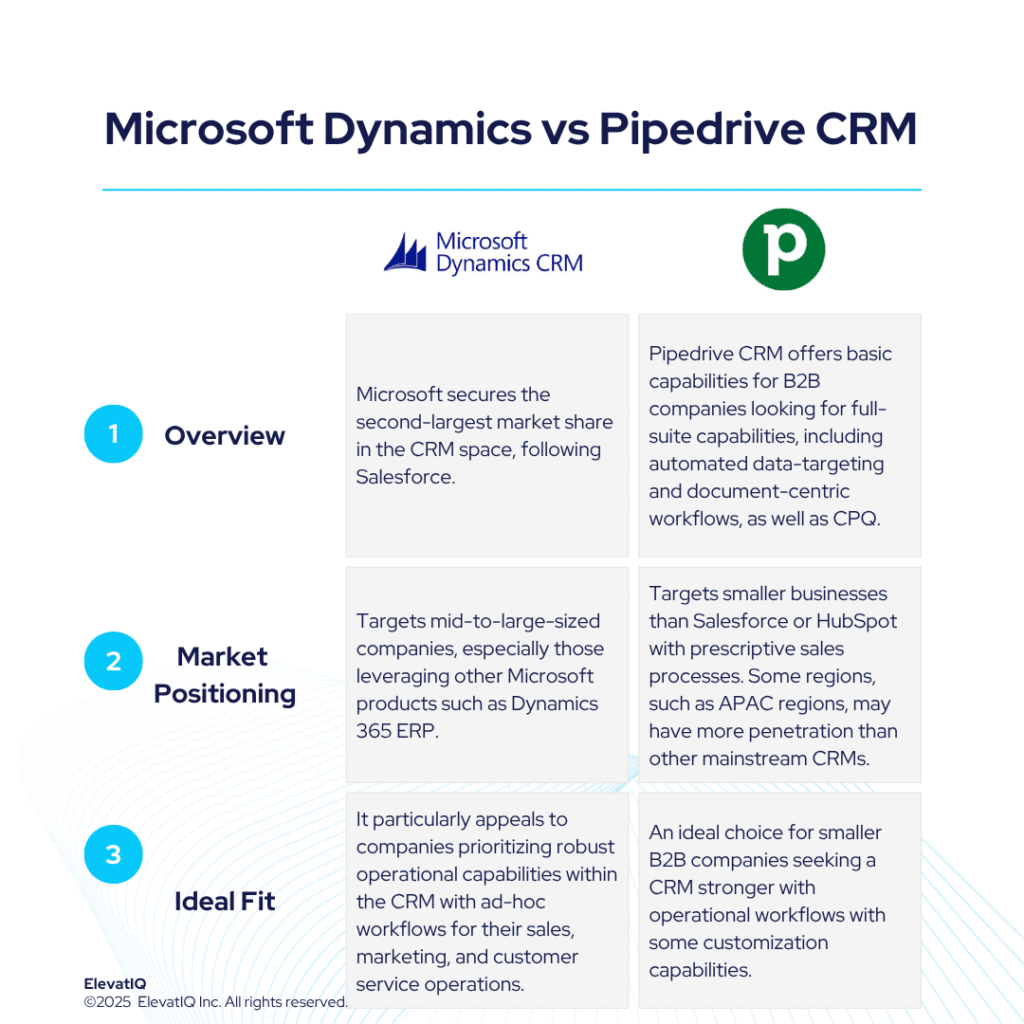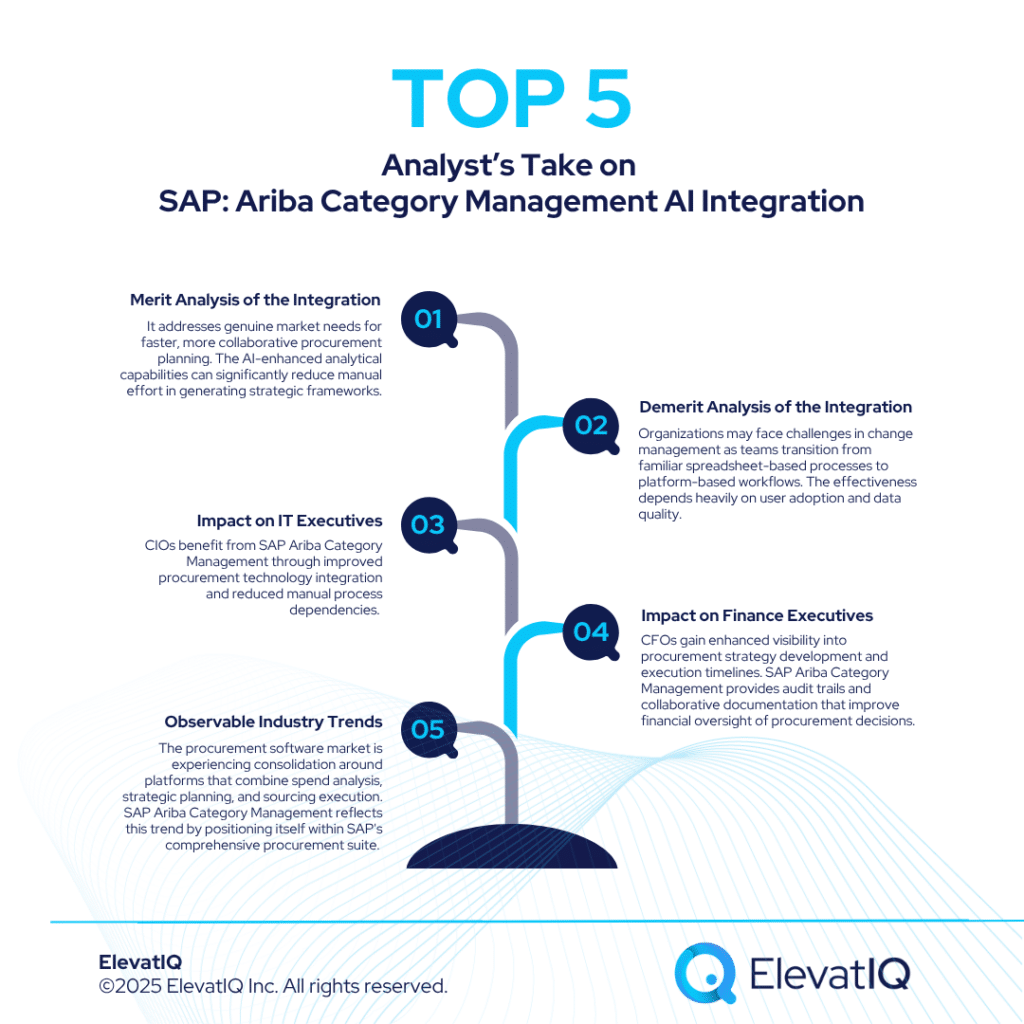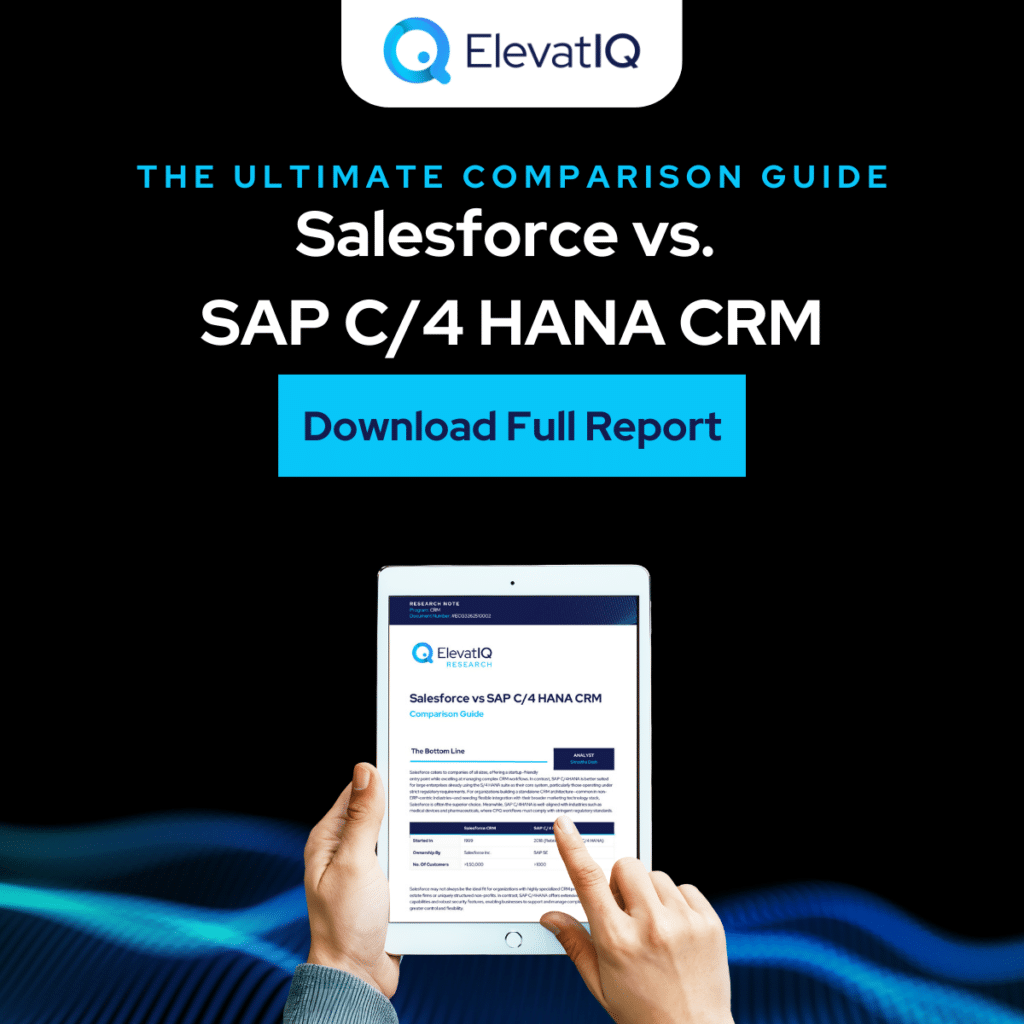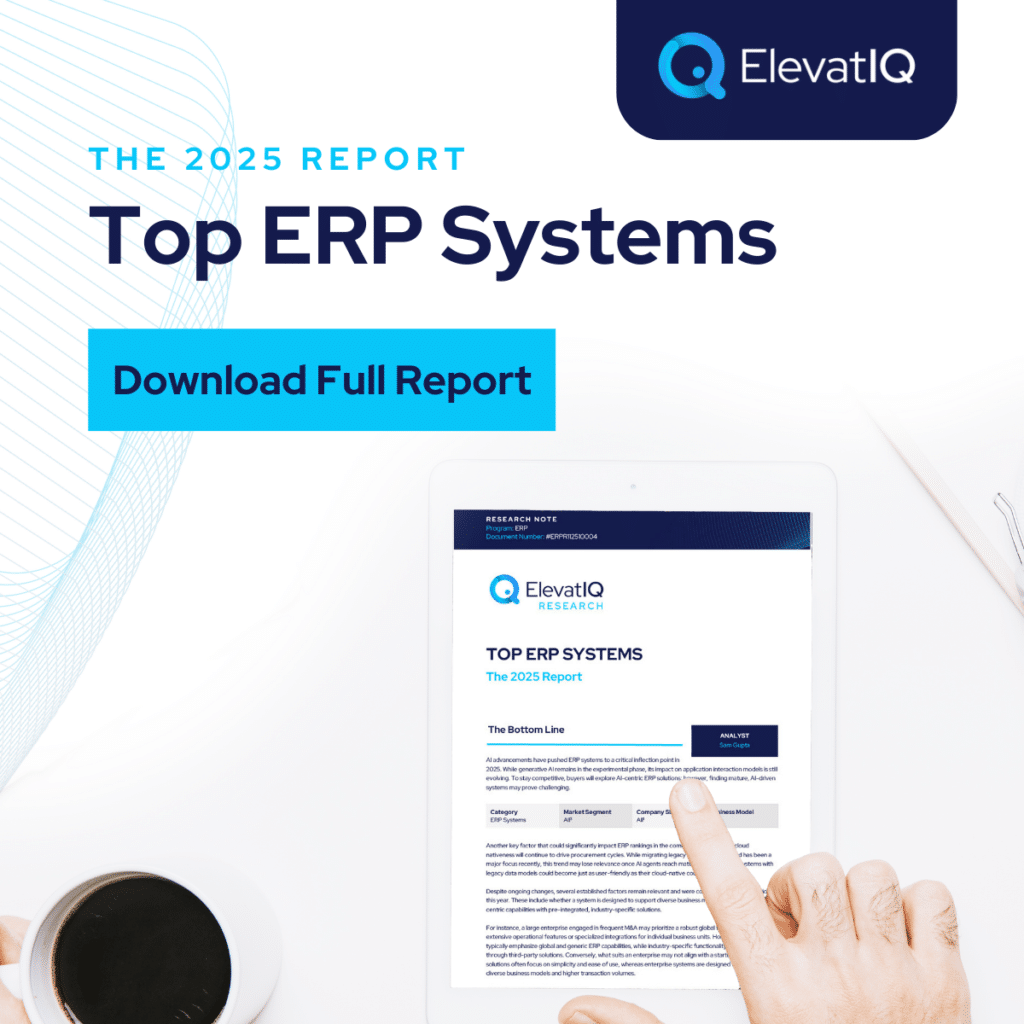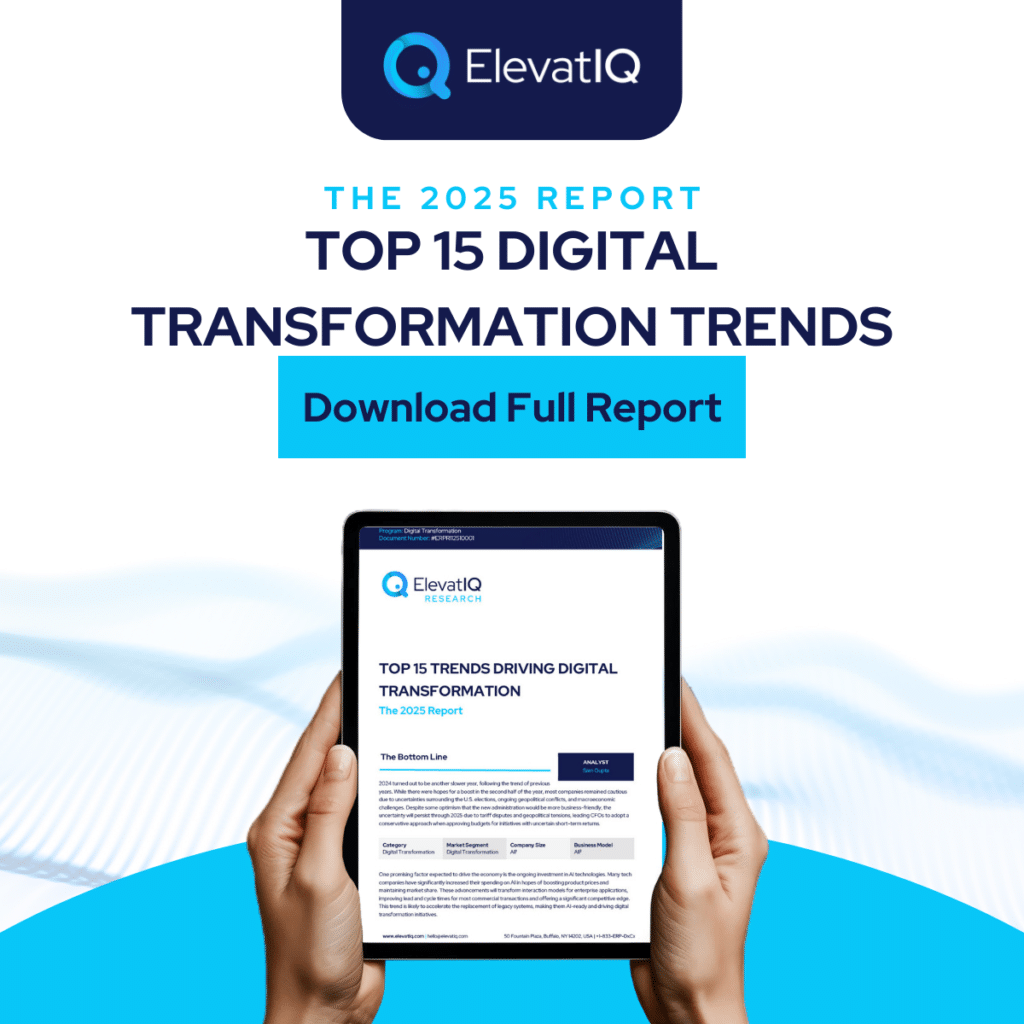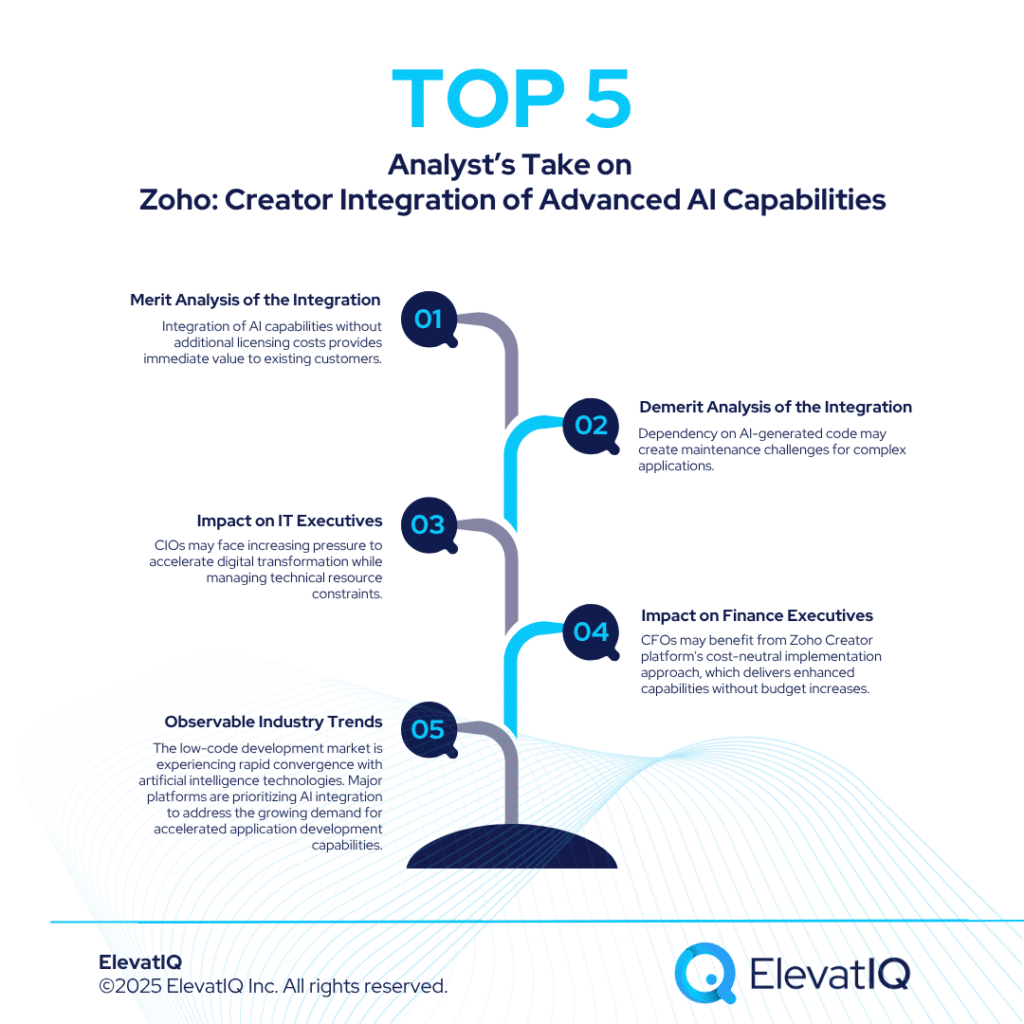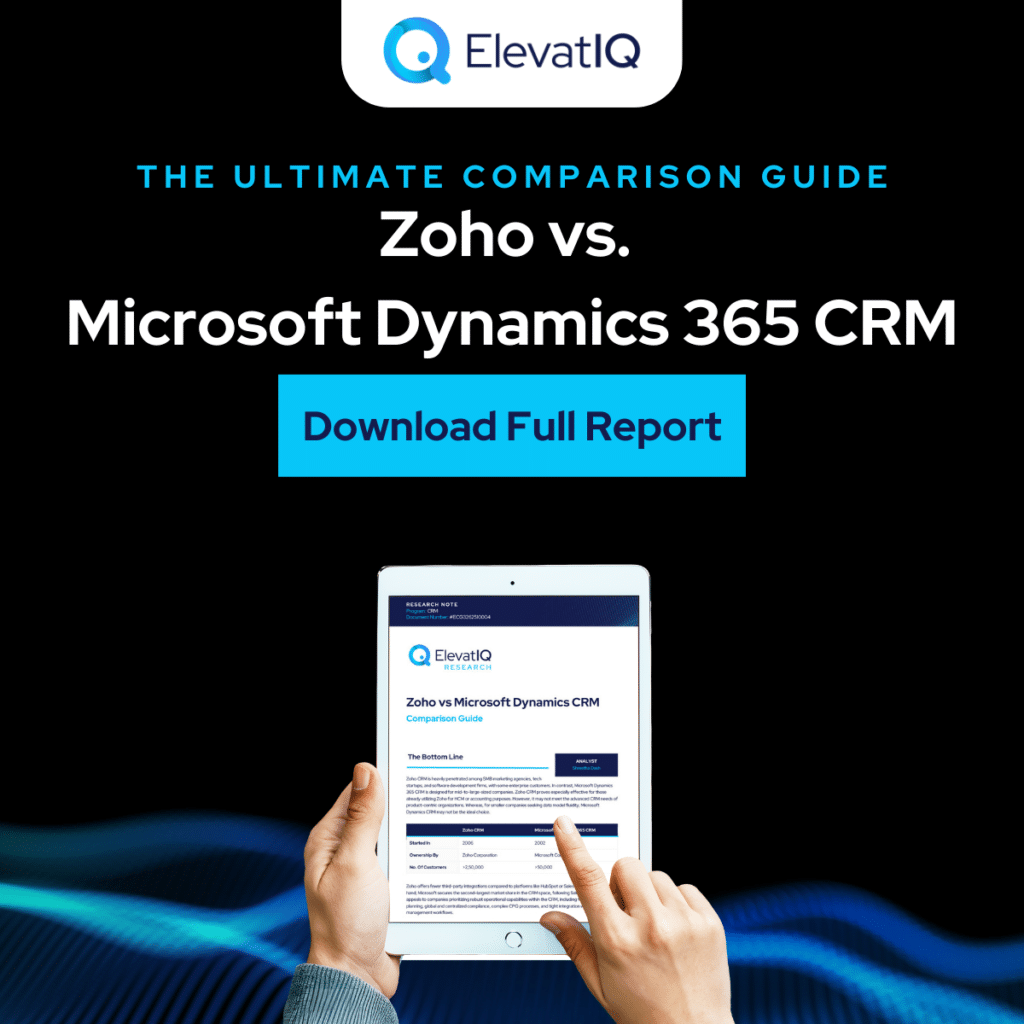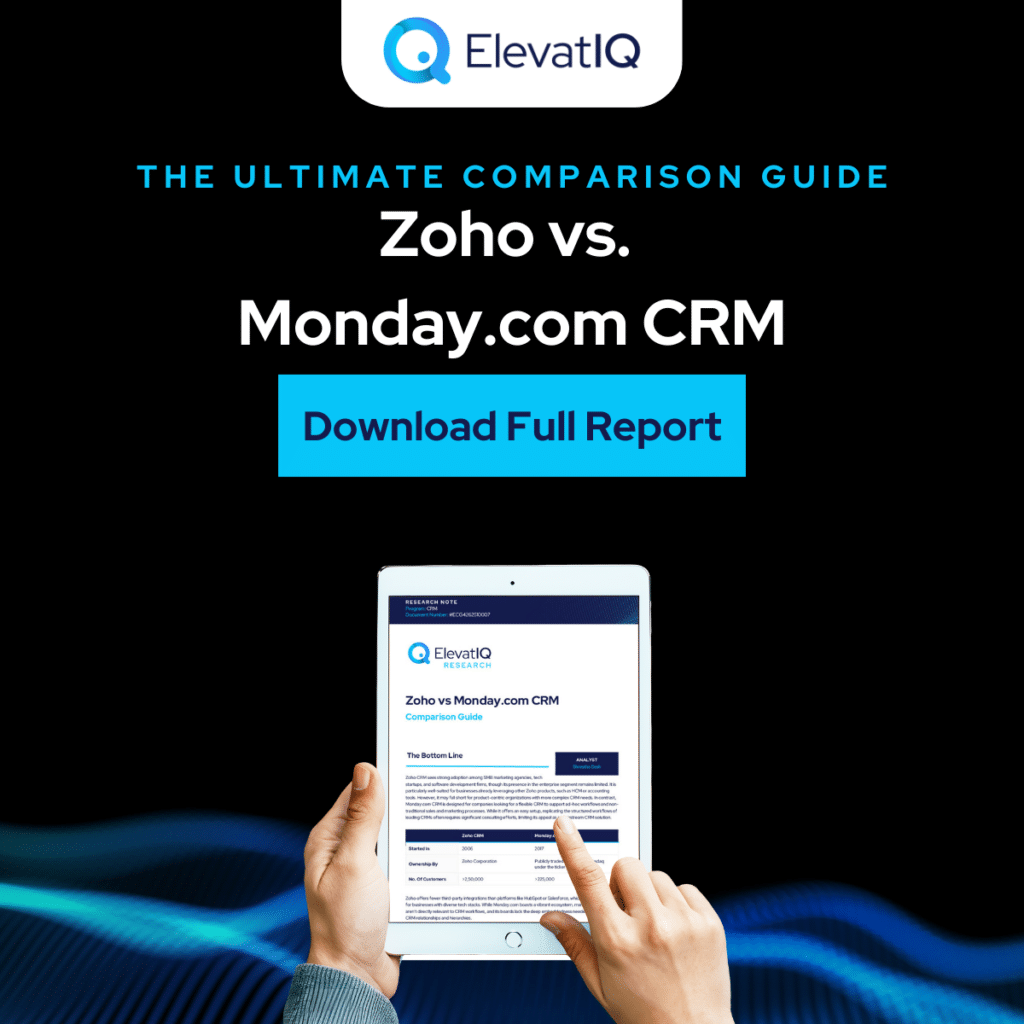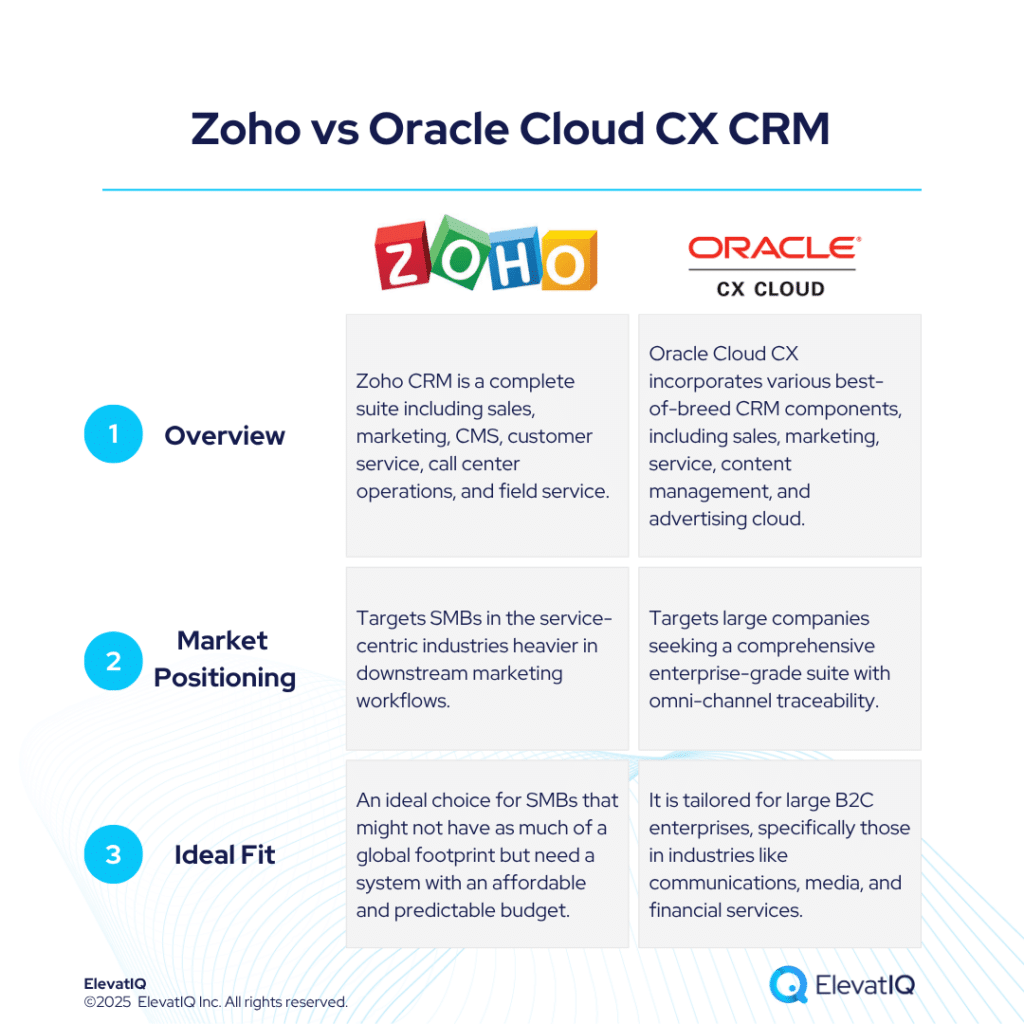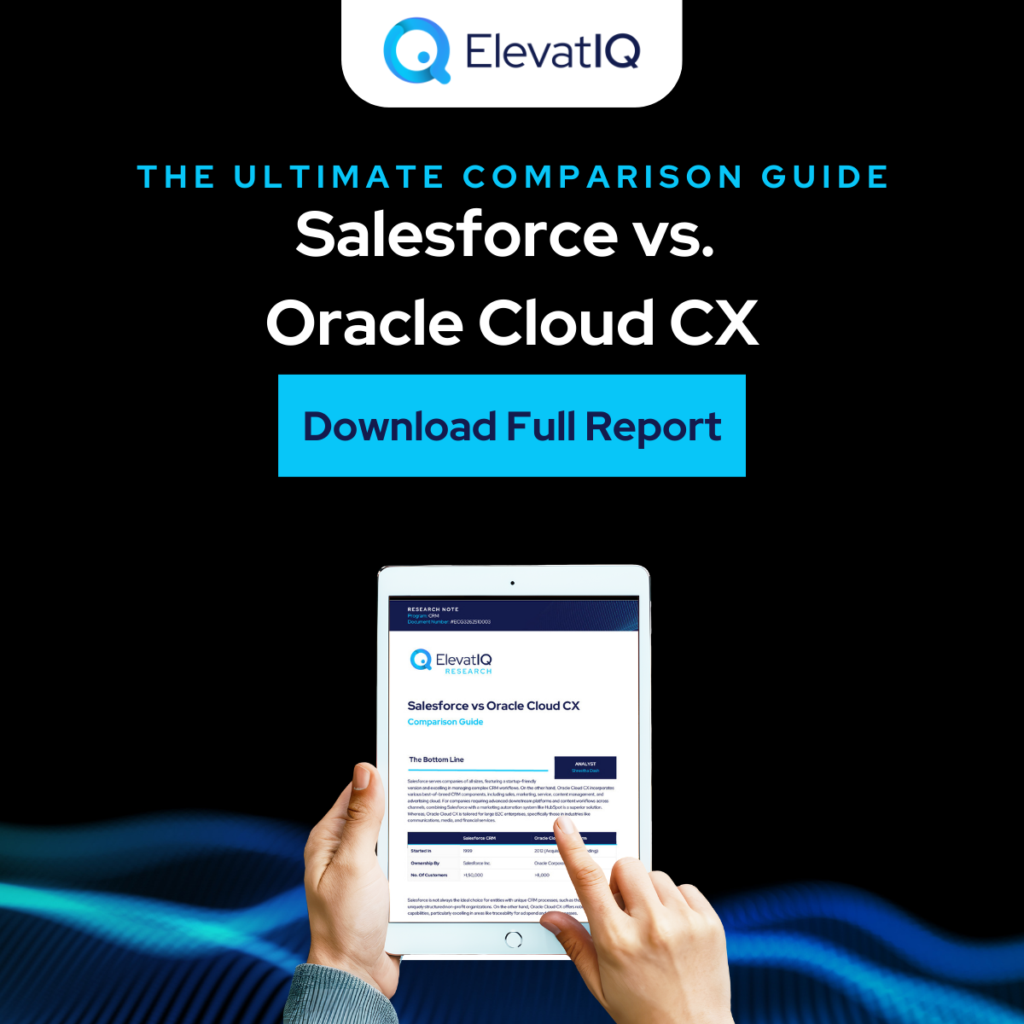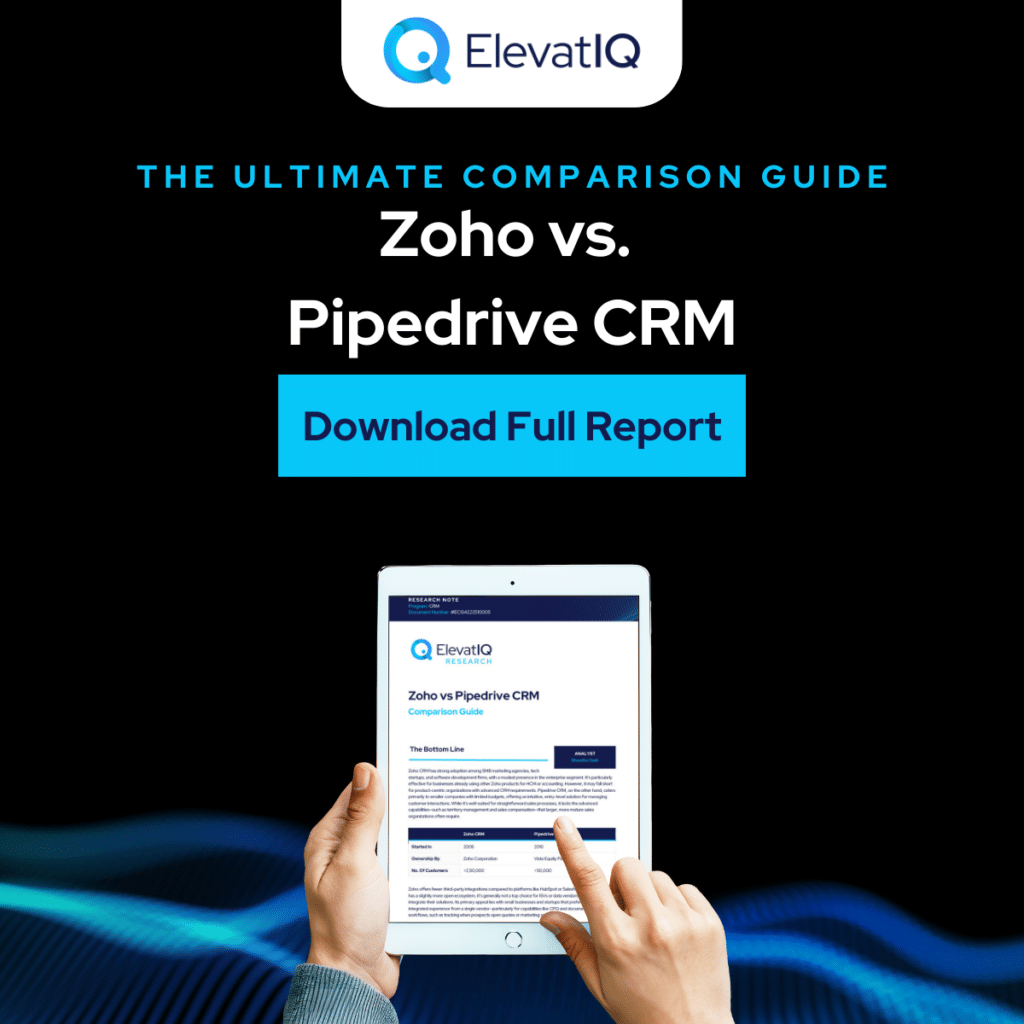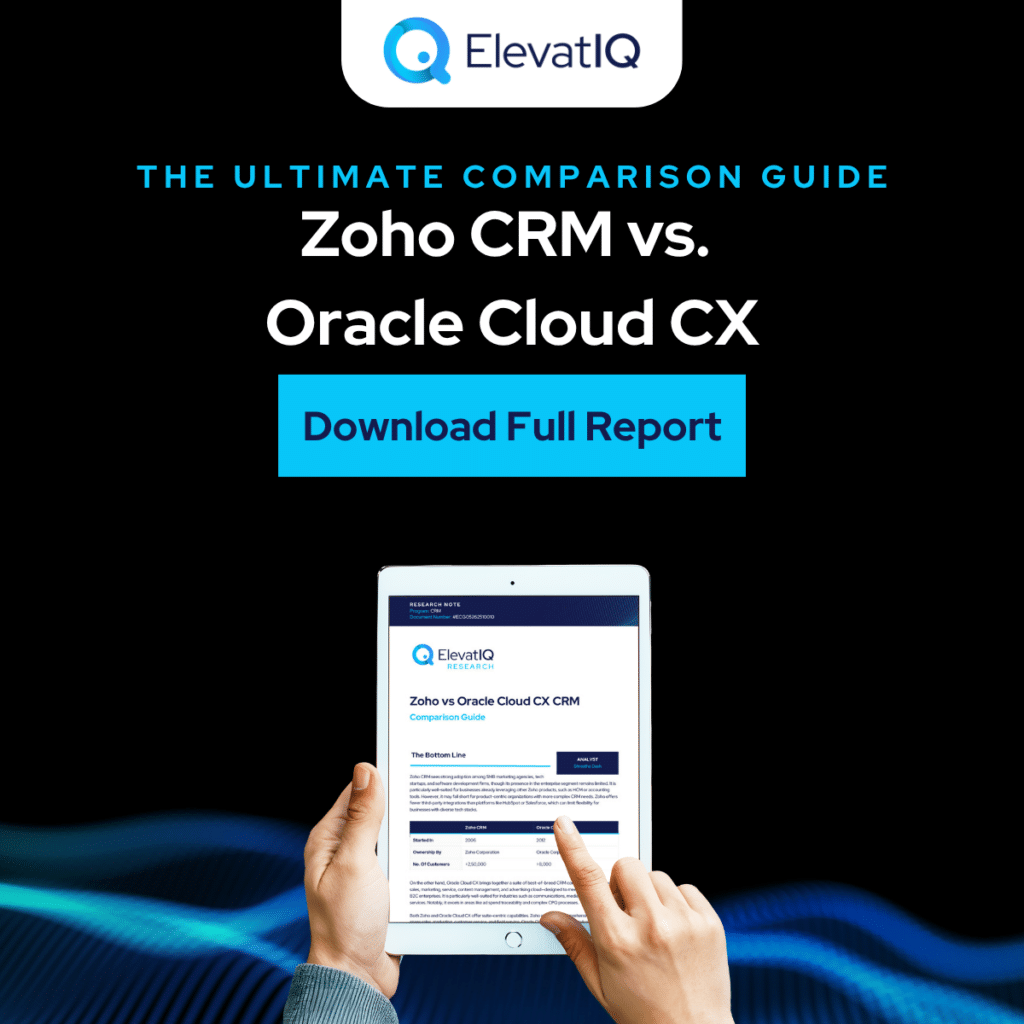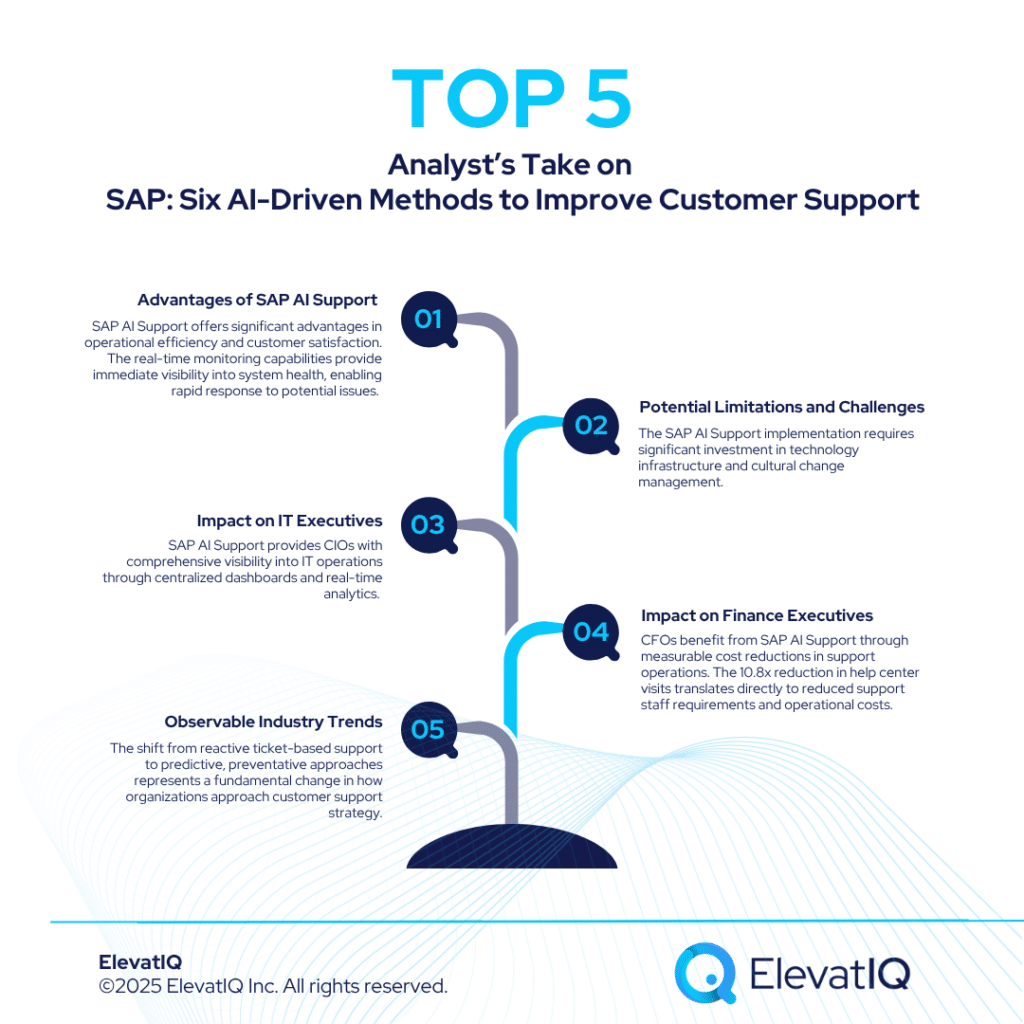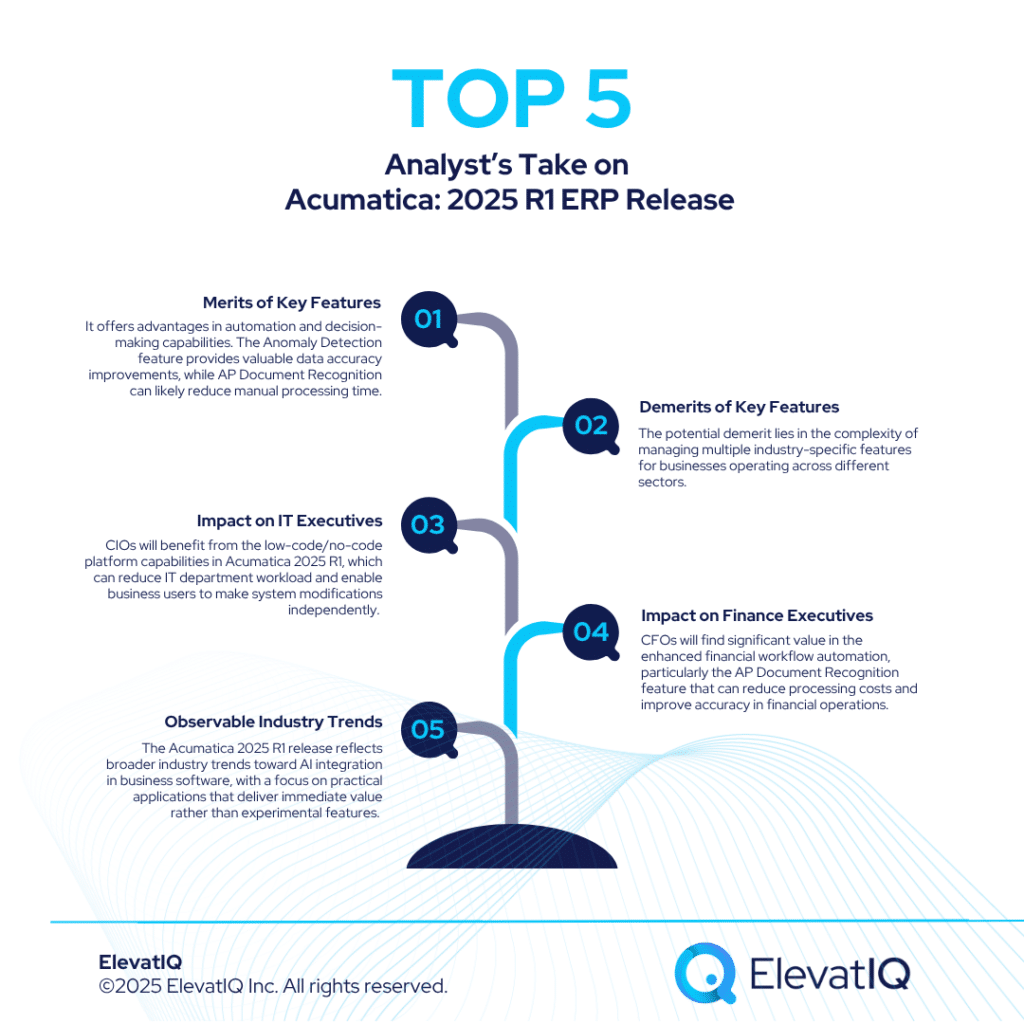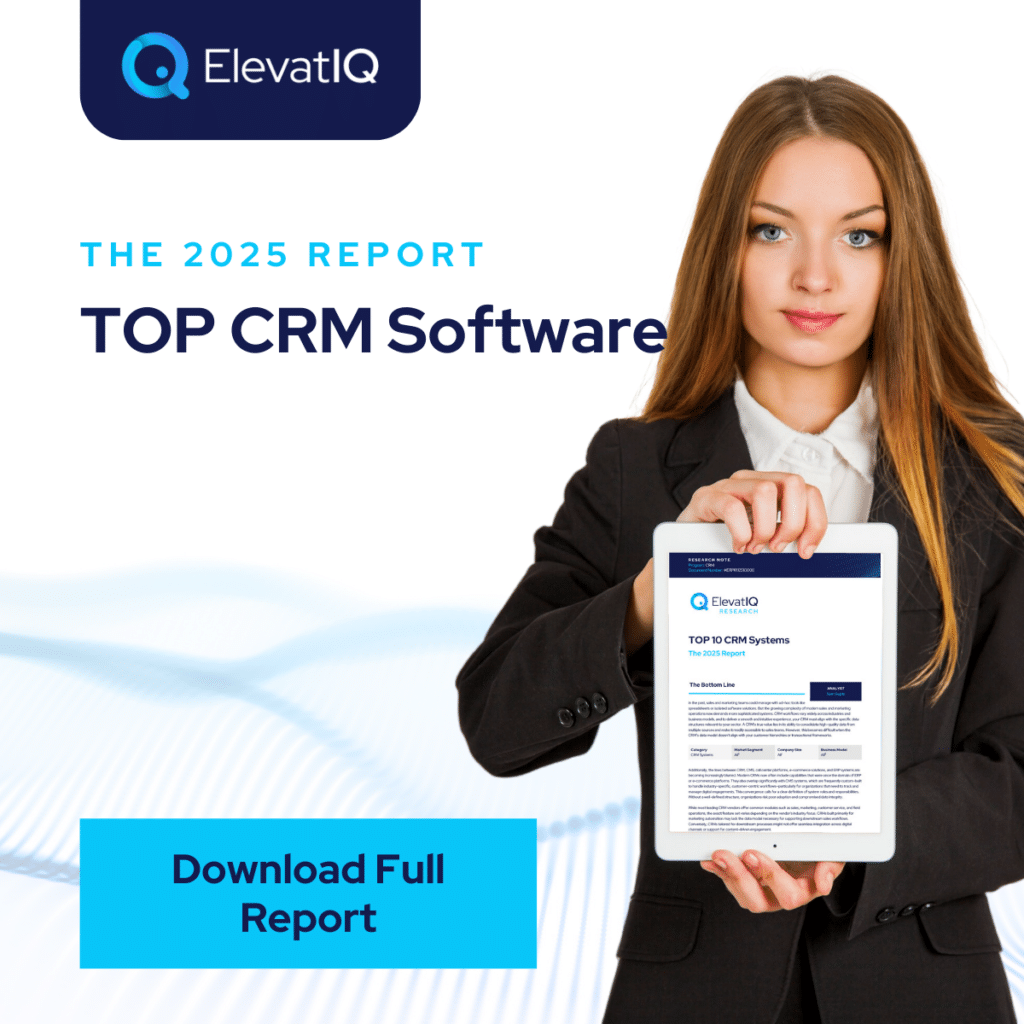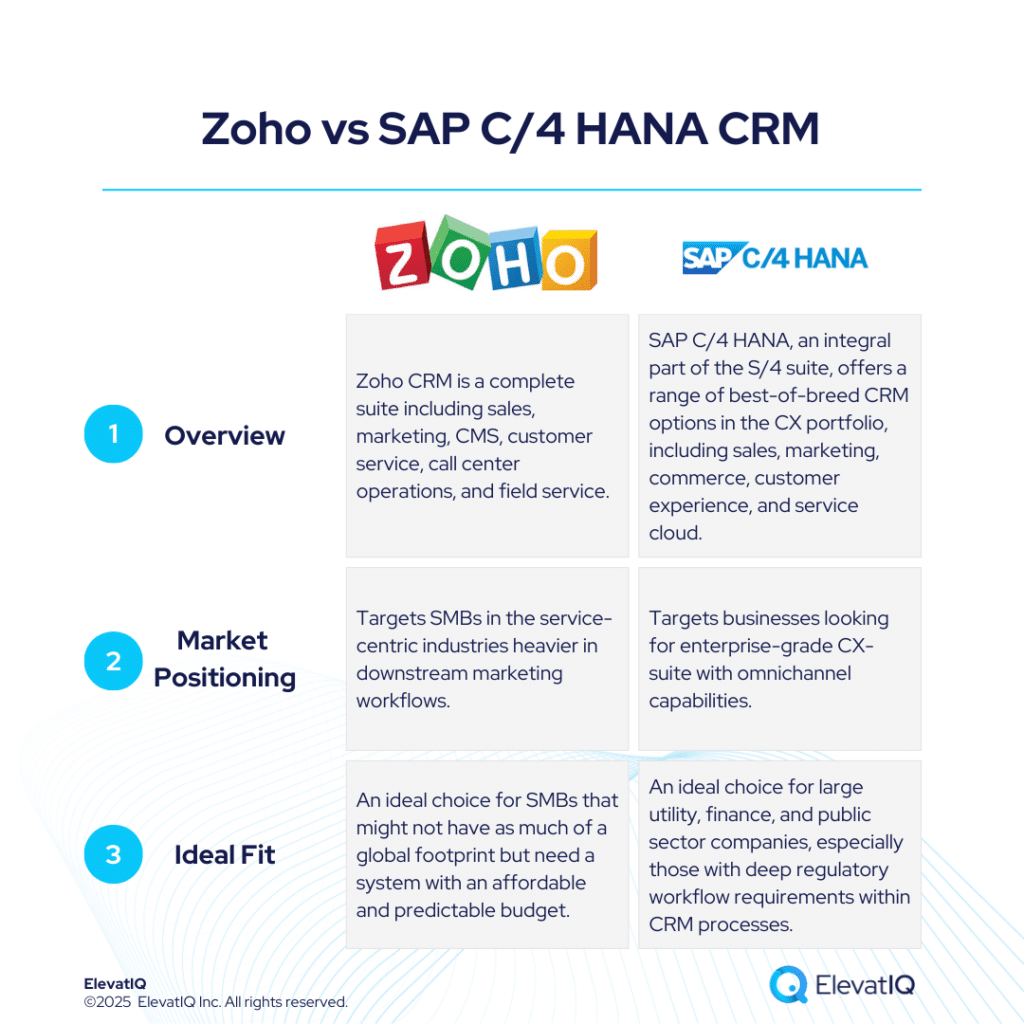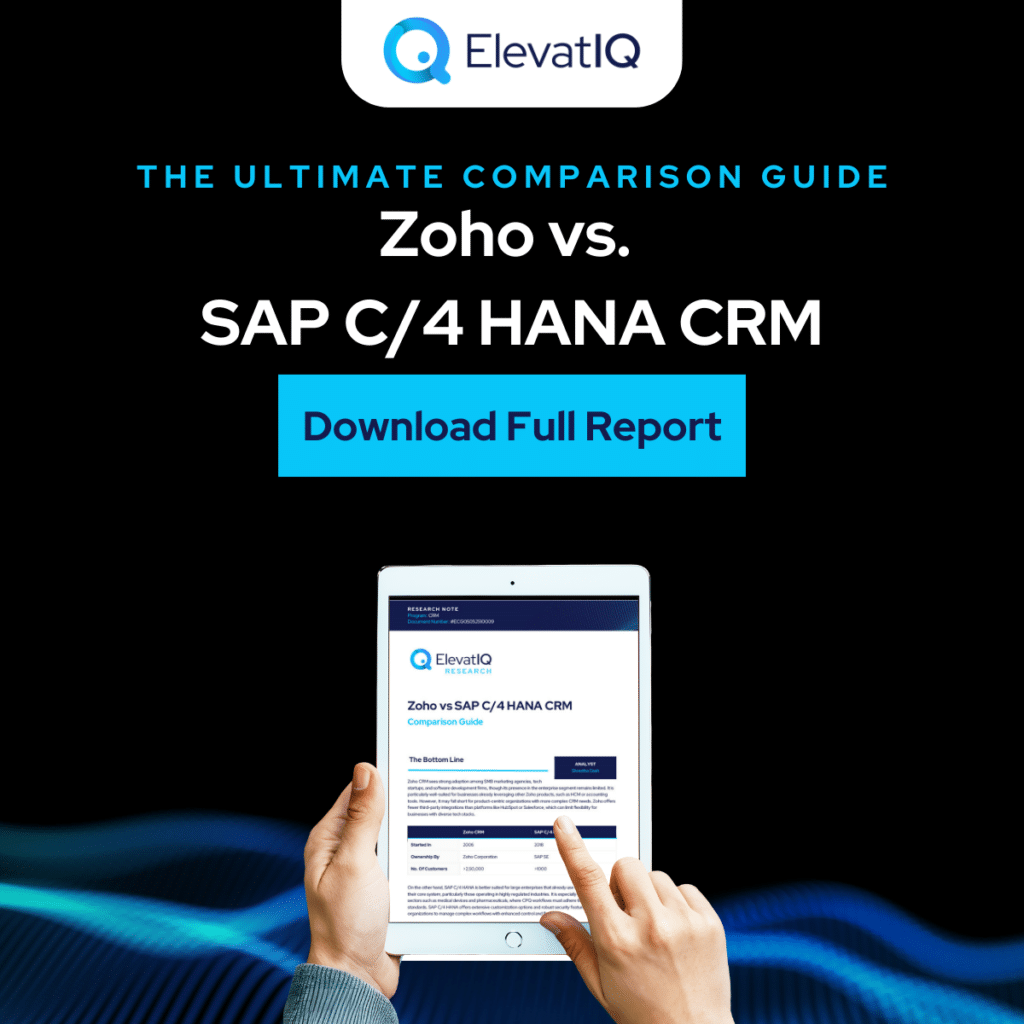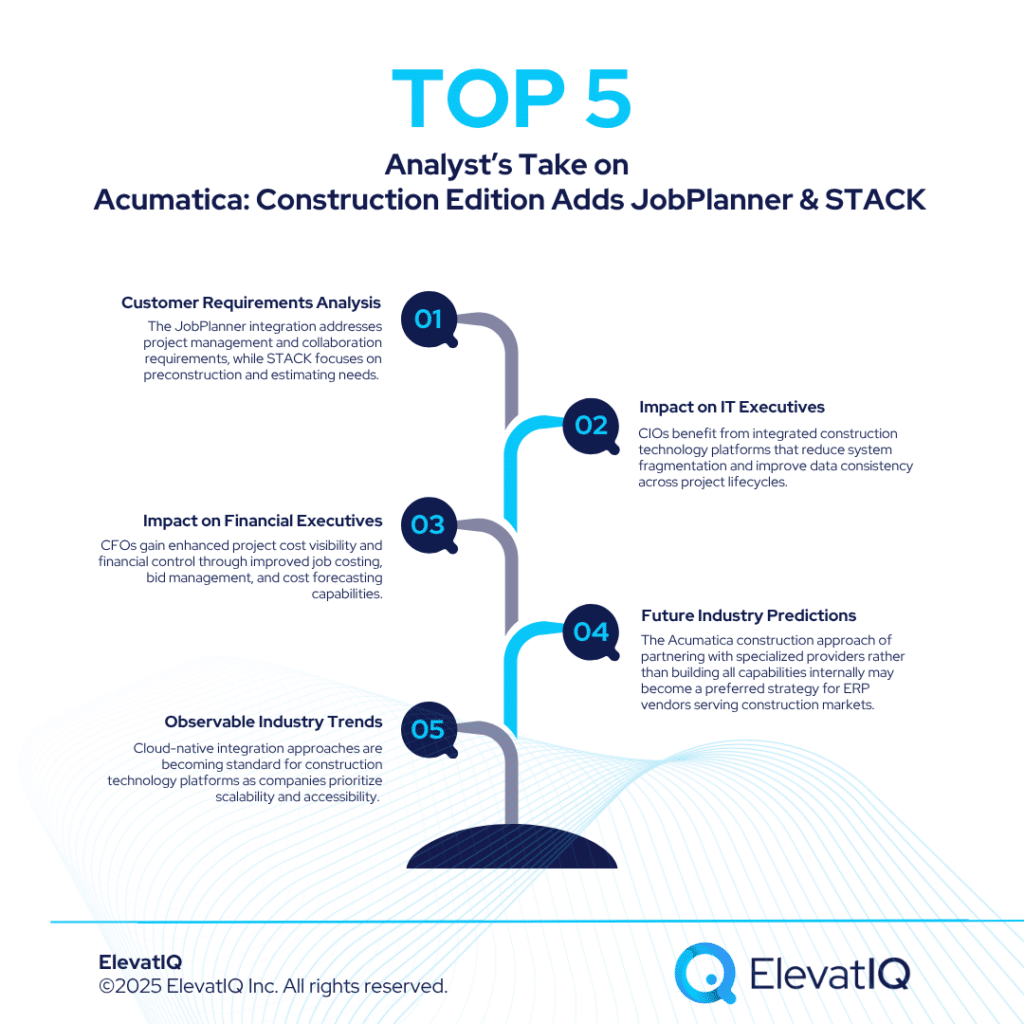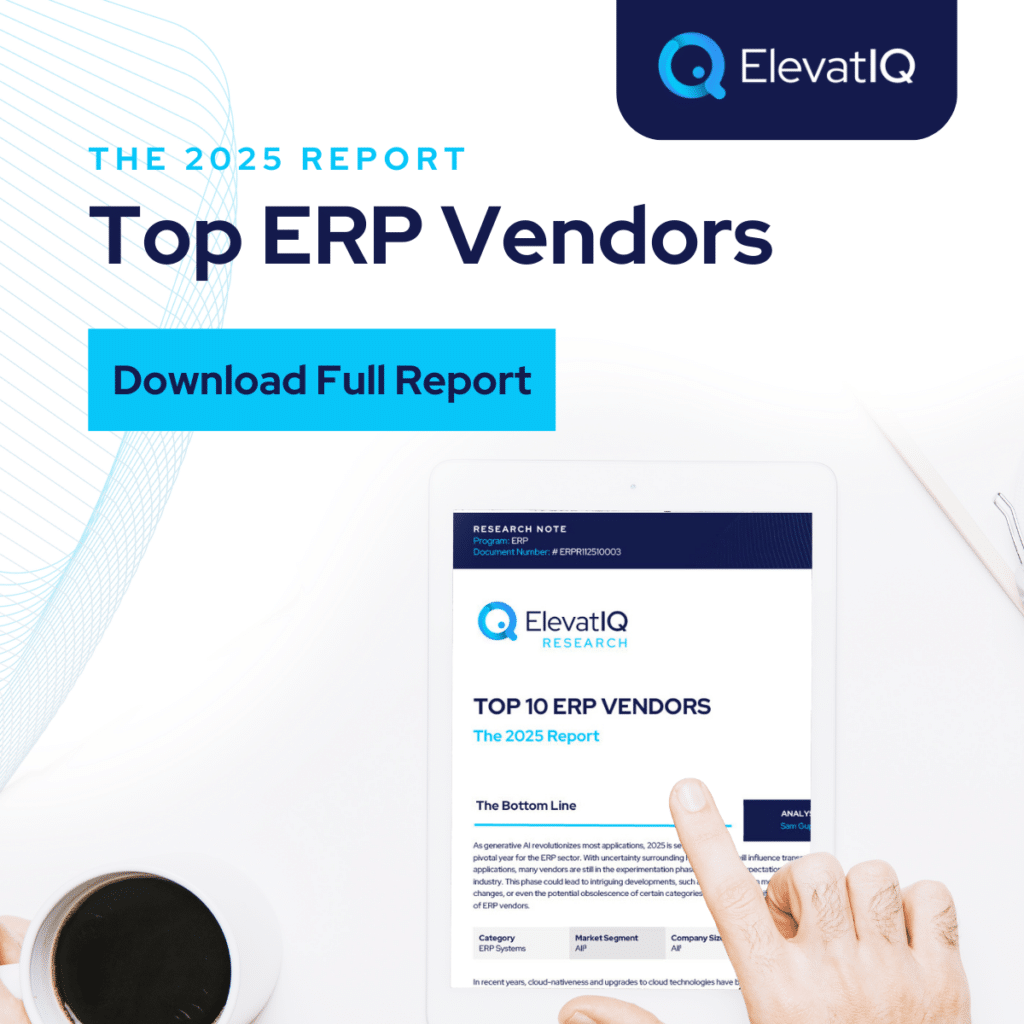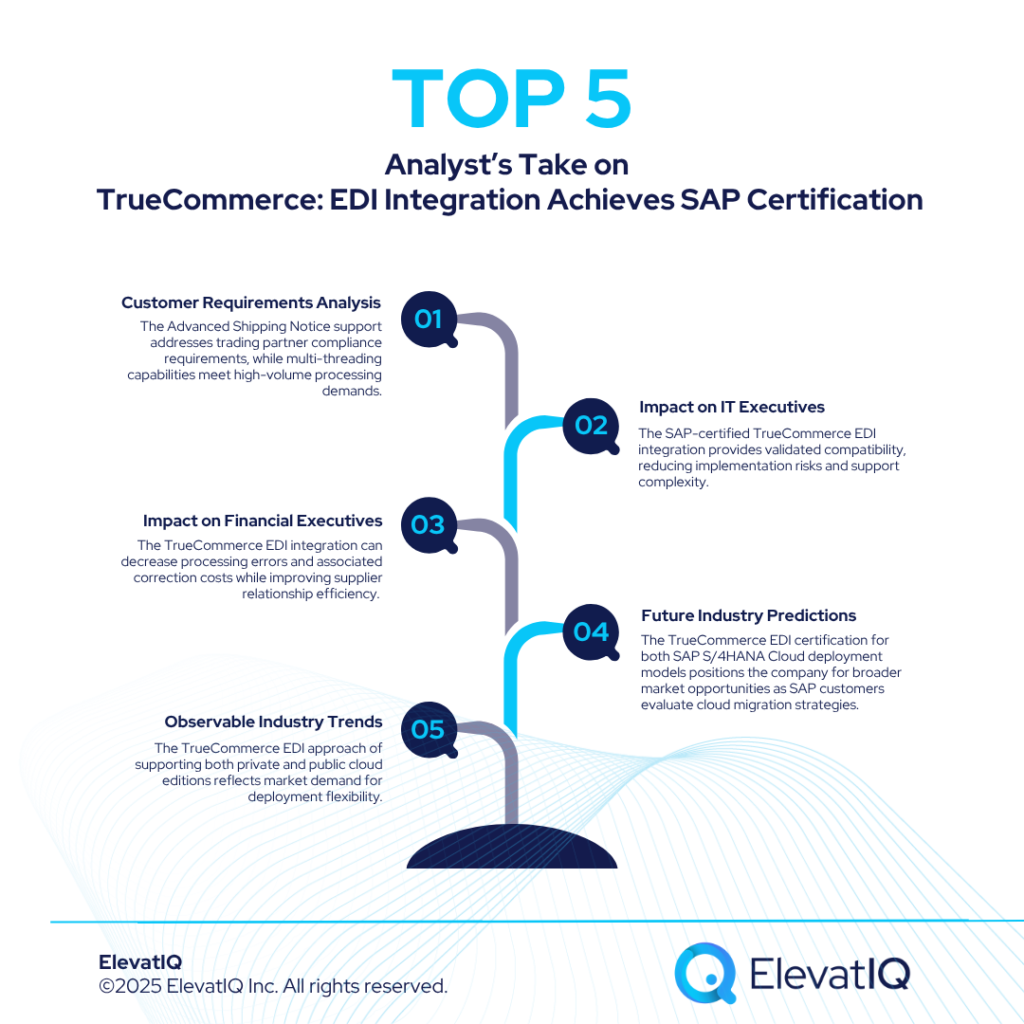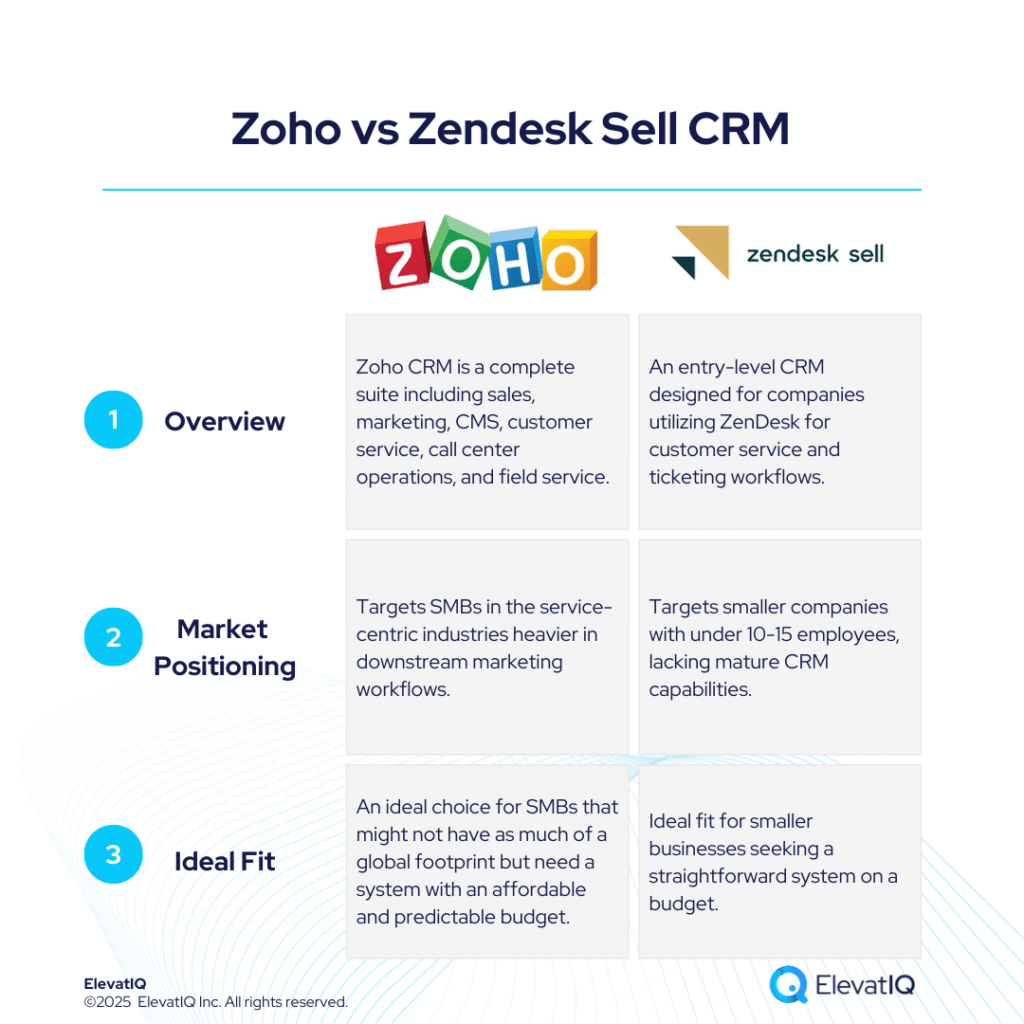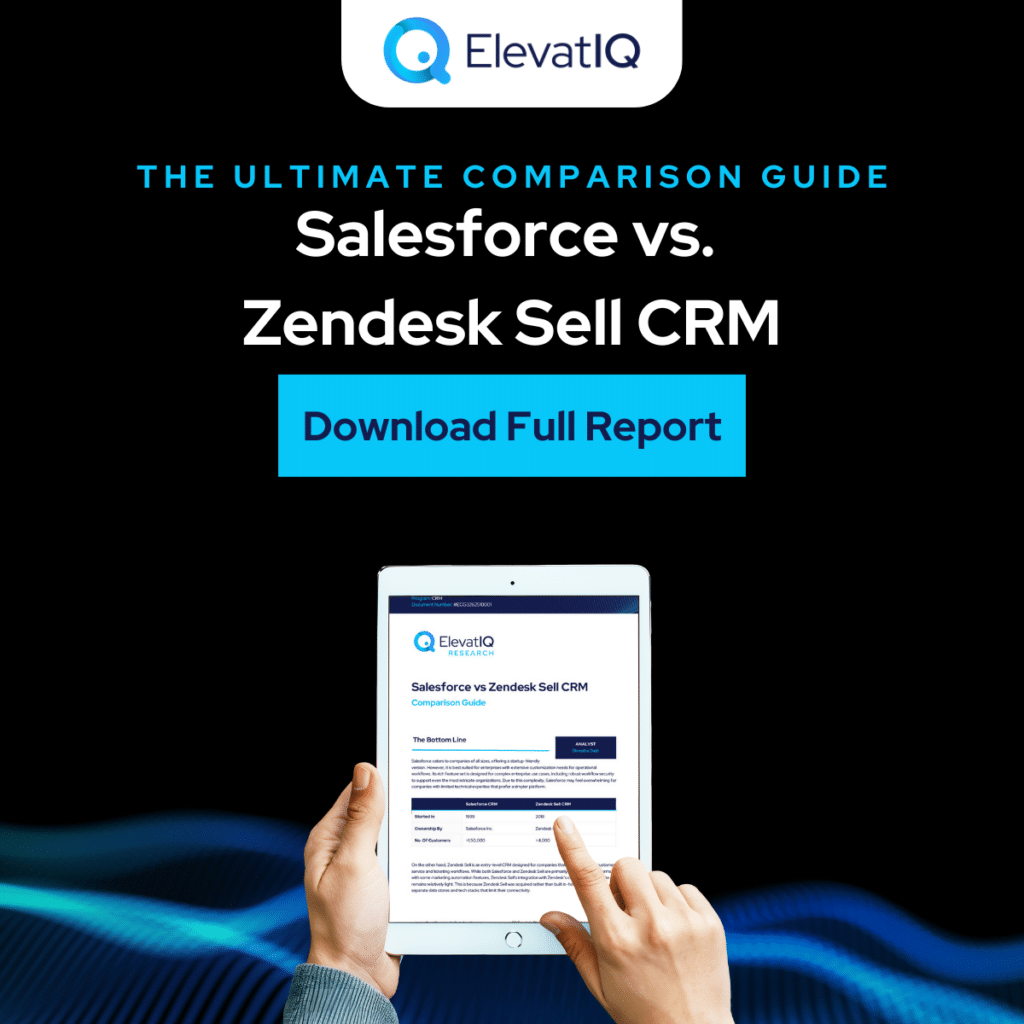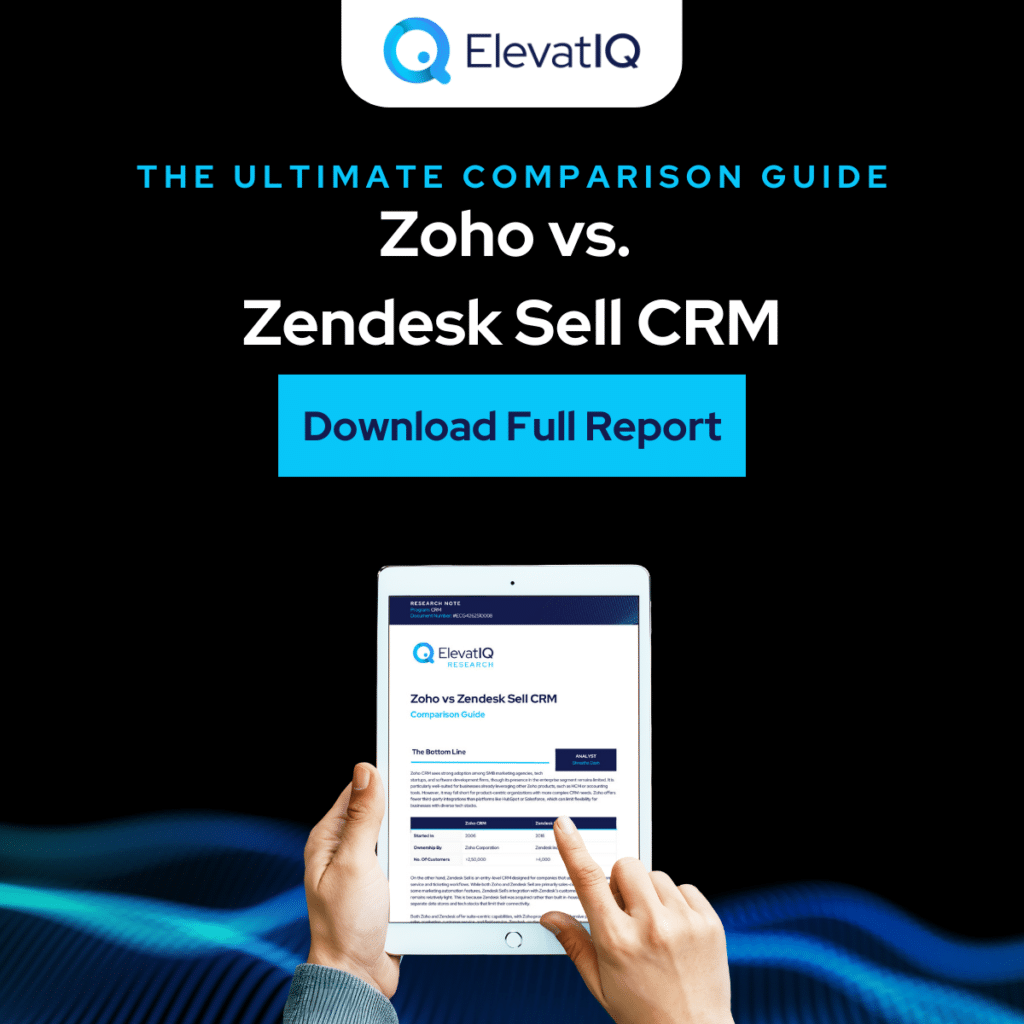Microsoft Dynamics CRM vs Pipedrive: Independent Review
Microsoft Dynamics CRM is a popular choice among organizations that require a highly customizable solution or need to manage complex, ad-hoc processes that smaller CRMs often can’t handle. The platform offers a wide range of modules covering sales, customer insights, field service, call center operations, and event management. However, it relies heavily on third-party add-ons for key features like content management systems (CMS) and omnichannel integration. This dependence can lead to longer, more expensive implementation timelines, making it less attractive to smaller businesses with tighter budgets.
In contrast, Pipedrive CRM is designed primarily for smaller companies seeking an intuitive, entry-level platform to manage customer interactions. It works well for straightforward sales processes but lacks advanced functionalities such as territory management and sales compensation that larger, more mature sales teams require. While both platforms provide solid CRM capabilities, their strengths differ significantly. Pipedrive is more accessible for smaller businesses and fits use cases like CPQ, document-based notifications, and basic workflow automation, but it doesn’t support field service management or advanced custom app development. Microsoft Dynamics, meanwhile, lacks a native data platform within its ecosystem, limiting its ability to support sophisticated data-driven or intent-based workflows.
Both systems offer customization options, but they vary greatly in complexity and scope. Pipedrive’s customization tools cater to users with limited technical skills and allow only basic changes. Microsoft Dynamics, on the other hand, offers a comprehensive development stack for deep customization, including the ability to override core business objects. It also benefits from a robust ecosystem of industry-specific solutions that can speed deployment through pre-built functionality. However, these packaged apps can sometimes restrict flexibility due to their rigid underlying models.
What Is Microsoft Dynamics CRM?
Microsoft Dynamics 365 CRM delivers a comprehensive, tightly integrated solution designed to work seamlessly with Microsoft’s mid-market and enterprise ERP systems. Its unified approach, including core CRM, Customer Insights, and field service modules, ensures data integrity and smooth cross-application communication, making it ideal for organizations with complex, global workflows and stringent regulatory needs. However, this complexity means implementations often require significant consulting support, and the user experience can be more challenging for sales teams compared to platforms like Salesforce or HubSpot, which prioritize quicker onboarding and ease of use.
Given its advanced marketing automation and built-in event management capabilities—features that most other CRMs require third-party tools to deliver—Dynamics 365 CRM stands out for organizations seeking an all-in-one platform with end-to-end traceability. Yet, this breadth and depth of features raise important questions: Does your business need such a high level of integration and customization? Can your team handle the consulting and development effort needed to fully leverage Dynamics 365’s capabilities? How critical is seamless global workflow management to your CRM strategy? To explore these questions and make a confident choice, download the Ultimate Microsoft Dynamics CRM vs Pipedrive Comparison Guide now.
What Is Pipedrive CRM?
Pipedrive is designed primarily for SMBs seeking an easy-to-use CRM solution with straightforward implementation and limited budgets. While it has expanded its capabilities through acquisitions, including data-driven tools for website visitor tracking and marketing automation, its overall feature set remains more focused and less comprehensive than larger platforms like Microsoft Dynamics CRM. Pipedrive’s bundled CPQ and product management features appeal especially to product-centric businesses, but this focus can add complexity for companies outside those industries. Its growing international presence, particularly in Asian and European markets, showcases its commitment to localization, including support for region-specific currencies, taxes, and regulations.
Given Pipedrive’s simpler workflow customization and reliance on third-party tools for content management and event workflows, businesses must ask themselves: Are you looking for a lightweight CRM that’s easy to deploy and manage, or do you need a more robust, deeply customizable platform? How important is native integration versus using third-party add-ons in your CRM strategy? And how critical is predictable pricing for your organization’s budgeting? To help you evaluate these questions and make a well-informed decision, download the ultimate Microsoft Dynamics CRM vs Pipedrive comparison guide now.
Microsoft Dynamics CRM vs Pipedrive Comparison
Choosing between Microsoft Dynamics CRM and Pipedrive is a crucial step for businesses aiming to enhance operational efficiency and ensure strategic fit. Microsoft Dynamics CRM offers an extensive data model designed to meet the complex needs of diverse industries, supporting advanced features like AI-driven insights, unified customer data platforms, and customizable workflows. Its robust ecosystem seamlessly integrates with other Microsoft products, delivering strong operational capabilities such as territory planning, global compliance, and complex CPQ processes. Additionally, Microsoft Dynamics excels in territory and compensation planning, making it ideal for organizations that require sophisticated out-of-the-box tools and tight correlations between pricing, products, and accounts.
On the other hand, Pipedrive presents a user-friendly data model and interface similar to HubSpot, tailored more for SMBs with simpler CRM needs. While its ecosystem is growing with over 400 app integrations, its marketing automation and operational capabilities are more limited, especially for industries requiring deep territory management and sales compensation functionalities. Pipedrive offers easier-to-customize reports and a straightforward pricing model, but potential tier limitations might cause unexpected costs for some buyers. So, which CRM aligns better with your business complexity and growth plans? Do you prioritize deep customizability and advanced workflow automation, or is ease of use and predictable pricing more important? To find clear answers, download the ultimate Microsoft Dynamics CRM vs Pipedrive comparison guide now.
Microsoft Dynamics CRM vs Pipedrive Module Comparison
Both platforms provide a wide range of features and capabilities aimed at optimizing business operations and boosting efficiency. In this comparison, we focus on the unique strengths of Microsoft Dynamics CRM versus Pipedrive across key areas, offering valuable insights to help businesses make well-informed decisions about their CRM choice. This section specifically examines features within the marketing, sales, customer service, and e-commerce modules.
Marketing
Microsoft Dynamics CRM offers a robust suite of content creation tools that enable users to design and manage reusable content blocks across various campaigns, enhancing consistency and efficiency. It also provides built-in SEO metadata management, making it easier to optimize websites with features such as sitemap control and page metadata adjustments. Social media management is streamlined with the ability to oversee multiple accounts from a single interface, while its email marketing capabilities include tools to create, schedule, and send targeted email campaigns, supporting a comprehensive digital marketing approach.
In contrast, Pipedrive CRM does not include a dedicated content creation tool but compensates by integrating smoothly with popular document management solutions like Google Docs. Its SEO features are more limited, often requiring third-party tools such as Google Analytics to fill gaps. Social media management in Pipedrive offers basic functionalities but lacks advanced features like post scheduling and in-depth analytics. While Pipedrive supports customizable email campaigns, its marketing toolkit is more suited for simpler needs. Are you looking for a CRM with deep, built-in marketing features, or would you prefer a platform that integrates easily with your existing tools? Do you need comprehensive social media oversight, or are basic features sufficient? Find out which platform aligns best with your business goals by downloading the ultimate Microsoft Dynamics CRM vs Pipedrive comparison guide now.
Sales
Microsoft Dynamics CRM provides a comprehensive set of lead management tools that allow businesses to capture, score, nurture, and convert leads effectively. Its sales pipeline management offers a clear, visual representation of the sales process, enabling teams to track deals at every stage. The platform also supports email tracking to monitor engagement, along with robust meeting scheduling features to streamline calendar management. Additionally, integrated collaboration tools foster real-time communication and teamwork, ensuring all team members stay aligned throughout the sales cycle.
On the other hand, Pipedrive CRM also excels in lead management with features like Leads Inbox, Web Forms, Chatbot, Live Chat, Prospector, and Web Visitors, designed to attract and engage prospects. Its highly customizable sales pipeline lets users tailor workflows to fit their unique sales processes. Email tracking is available on advanced plans, while meeting scheduling capabilities help simplify appointment setting. Collaboration is supported through the Sales Assistant, which provides real-time notifications and insights to keep teams coordinated. Which platform better supports your lead nurturing and sales process needs? Do you require deeper email tracking and collaboration tools or a more streamlined, customizable sales pipeline? Discover the full comparison and find the best fit for your business by downloading the ultimate Microsoft Dynamics CRM vs Pipedrive comparison guide now.
Customer Service
Microsoft Dynamics CRM delivers a robust ticketing system designed to efficiently manage and resolve customer issues, ensuring timely support and high satisfaction. Its live chat functionality, integrated through Dynamics 365 Customer Service, allows real-time engagement with customers. The platform also offers advanced customer support automation with automated workflows, escalation rules, and predefined response templates to streamline service processes. Additionally, omni-channel support enables businesses to manage customer interactions across multiple channels, including a self-service portal that empowers customers to find solutions independently.
Pipedrive CRM also includes ticketing capabilities by integrating CRM with help desk tools, providing a unified support experience. Its live chat feature is available through the LeadBooster add-on, allowing direct communication with prospects and customers. Pipedrive supports customer support automation by optimizing workflows around emails, calls, and meetings to enhance responsiveness. The platform’s omni-channel support covers multiple communication channels such as phone, email, social media, and live chat, helping businesses stay connected across touchpoints. Which platform offers the ticketing and support automation features that align best with your customer service goals? Do you need built-in omni-channel tools or prefer modular add-ons? Get the full story by downloading the ultimate Microsoft Dynamics CRM vs Pipedrive comparison guide now.
E-commerce
Microsoft Dynamics CRM excels in product catalog management by enabling businesses to create and maintain a comprehensive product catalog that integrates seamlessly with other Dynamics 365 applications. This integration, especially with Dynamics 365 Supply Chain Management, helps streamline order fulfillment processes, ensuring efficient inventory control and timely delivery. Additionally, the platform offers robust tools for personalized shopping experiences through customer segmentation, targeted marketing, and insightful analytics that help tailor interactions based on customer behavior.
On the other hand, Pipedrive CRM offers a dedicated Product Information Management (PIM) system designed to organize and manage product data efficiently. Its Sales Order Management capabilities simplify the order fulfillment process, helping businesses keep track of sales and deliveries. By centralizing customer data, Pipedrive also provides valuable insights into customer behavior, supporting more personalized and effective marketing efforts. Which product catalog and order fulfillment features are most critical to your business needs? Do you prioritize integrated solutions or prefer standalone systems? Download the ultimate Microsoft Dynamics CRM vs Pipedrive comparison guide now.
Microsoft Dynamics CRM vs Pipedrive Pros
Microsoft Dynamics CRM is designed to support complex business objects and processes, making it an ideal choice for larger, regulated enterprises that require advanced territory management and global sales compensation planning. Its database-level replication and shared common data model ensure seamless integration across various Microsoft products, enhancing data consistency and operational efficiency. These robust features, however, often require a higher level of technical expertise to fully leverage, making consulting support a common necessity during implementation.
In contrast, Pipedrive CRM offers a more streamlined and user-friendly experience, particularly appealing to sales teams with limited technical proficiency. With a data model and interface similar to HubSpot, Pipedrive emphasizes ease of use and straightforward workflow automation that minimizes manual data entry and improves lead capture and nurturing processes. Its customizable reports and familiar layout make it accessible for smaller teams seeking practical CRM solutions without the complexity of enterprise-grade systems. Are you looking for a CRM that supports complex, regulated business needs, or do you prefer a simpler, more intuitive platform? Which features matter most for your sales team’s efficiency? Download the ultimate Microsoft Dynamics CRM vs Pipedrive comparison guide now to discover which solution fits your business best.
Microsoft Dynamics CRM vs Pipedrive Cons
Microsoft Dynamics CRM features tighter dependencies between its core business objects, which can present challenges for B2B organizations managing complex customer hierarchies. These dependencies, coupled with limitations in data model sharing for leads and contacts, may create integration difficulties for larger companies. Additionally, the platform is known for usability challenges and lacks intuitive support for CSV import and export, which can slow down data migration and onboarding processes.
On the other hand, Pipedrive CRM, while more user-friendly overall, also has limited data import and export functionality that can restrict its effectiveness for sales teams needing to bring in opportunities and leads from external systems. Its design is less suited for larger organizations that require robust data management capabilities and flexible integrations. Are you facing challenges with complex customer structures and data integration? Do you prioritize ease of use and data import flexibility for your sales team? Download the ultimate Microsoft Dynamics CRM vs Pipedrive comparison guide now to find the best CRM solution tailored to your business needs.
Download the Full Research Report
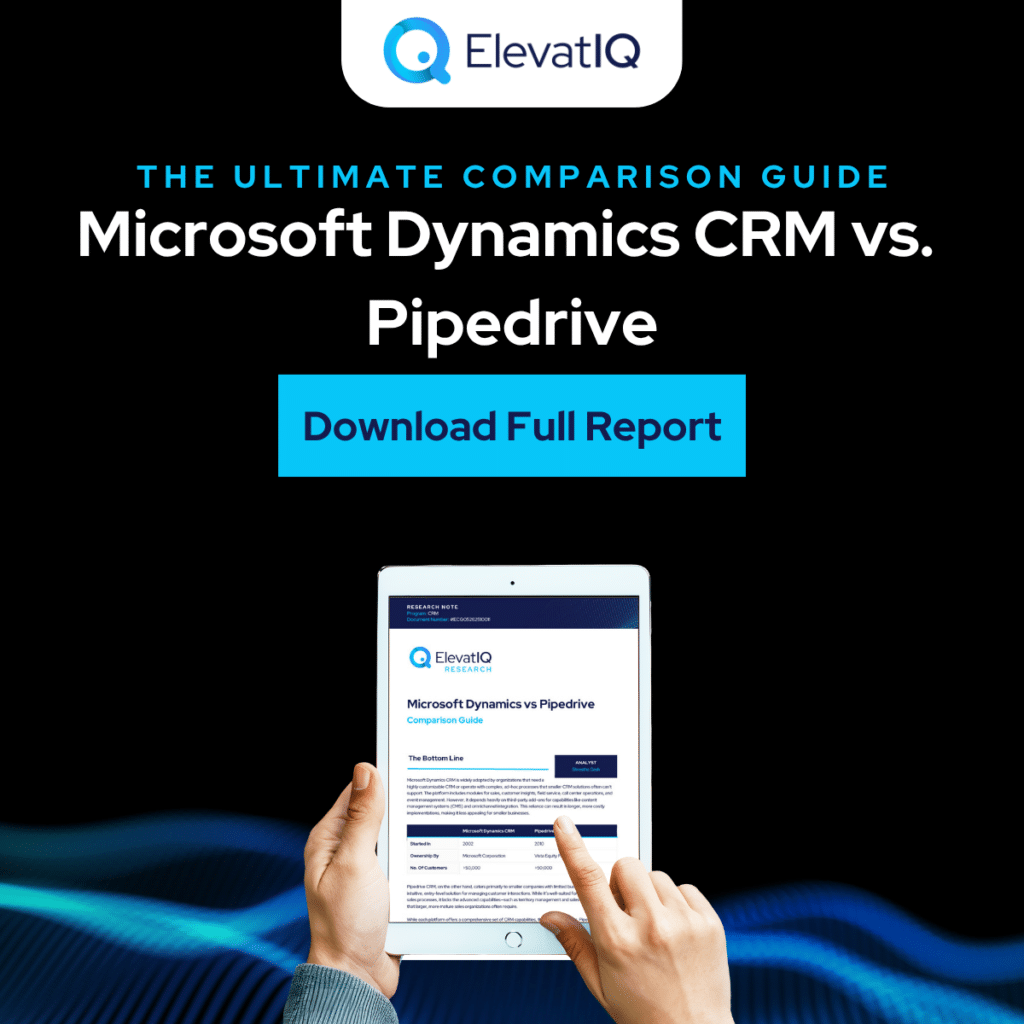
Microsoft Dynamics CRM vs Pipedrive: Independent Review Read More »

